What Going All-Remote Taught Us About Appsec and Testing Shortfalls



Working from Home Theory
- Uninterrupted
- Increased availability due to no commuting
- Relaxed and Happy


Working From Home Pandemic Edition
- Interrupted by spouses, roommates, children
- Unpredictable availability due to conflicting needs
- Not relaxed, not happy








Software Maturity
=
Process & Automation


The Challenge
- Main Application Security
- Maintain Application Quality
- Apply bug fixes
- Don't break things


Code Your Write
Code Your Users Install
10X


Application Security For The Code You Write


Application Security For The Code Others Write


YOU will be blamed for any problem
Photo of Titanic
My web apps
- 5-10 direct dependencies
- 5-10 direct dev dependencies
- 100 - 1000 transient dependencies


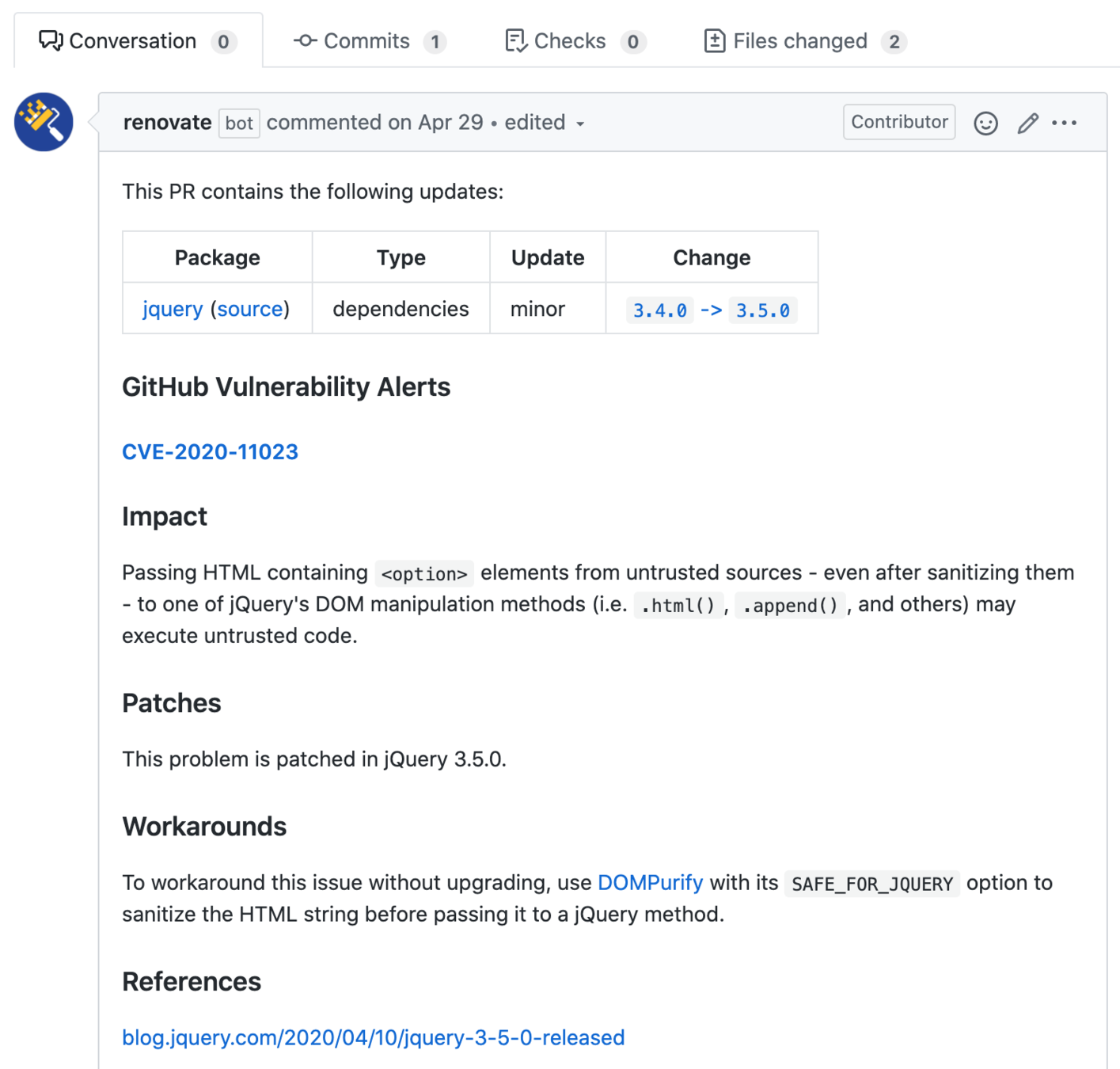
Are you going to be ready?


My dear, here we must run as fast as we can, just to stay in place. And if you wish to go anywhere you must run twice as fast as that.
Lewis Carroll, "Alice in Wonderland"
Talking about need to upgrade dependencies to keep up with security and performance updates


At The Office
(long long time ago, in the galaxy far far away)


Automatic Dependency Updates
I am not doing this
Automatic Dependency Updates
can be overwhelming
-
greenkeeper.io
-
dependabot
-
next-update
-
renovate bot


Automatic Dependency Updates
- meaningful
- configurable
- automatic
New feature!
Bug fixes!
No flood
No or little manual work


Rule: label most important dependencies versions
Your web framework
Your backend framework
Your main production libraries


Less important:
Build tools
Minor production utilities


Tip: update dependencies on different schedules
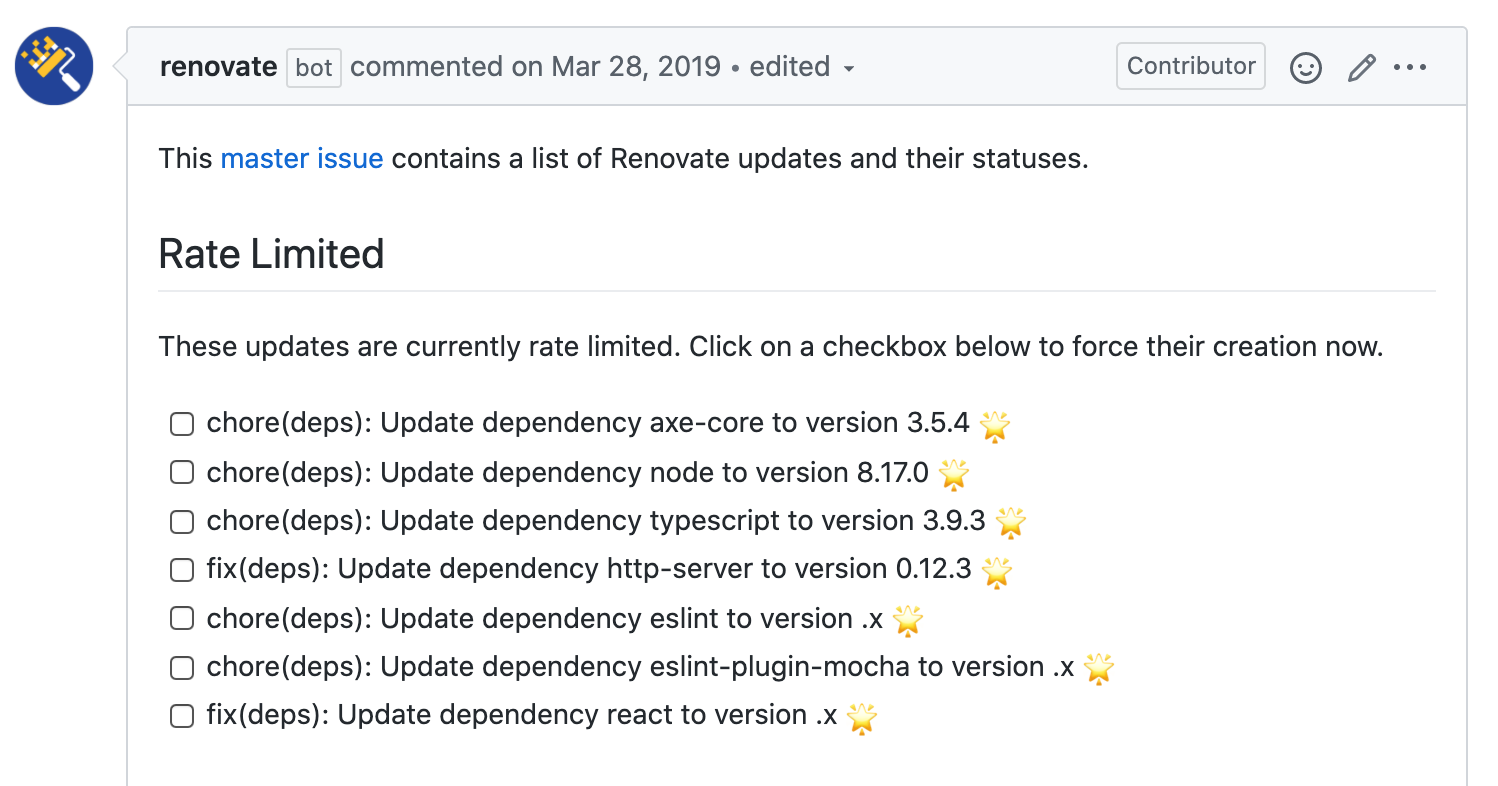
prod
dep
Tips & Tricks
Disabled upgrades for all tools but a few production dependencies
{
"extends": [
"config:base"
],
"enabledManagers": ["npm"],
"packageRules": [
{
"packagePatterns": ["*"],
"excludePackagePatterns":
["react", "react-dom"],
"enabled": false
}
]
}My users care about these libraries
I have automatic tests for these dependencies, if the tests pass, I can merge the update with confidence
renovate.json


Dependency Upgrades: use a review checklist


Dependency Upgrades: use a review checklist
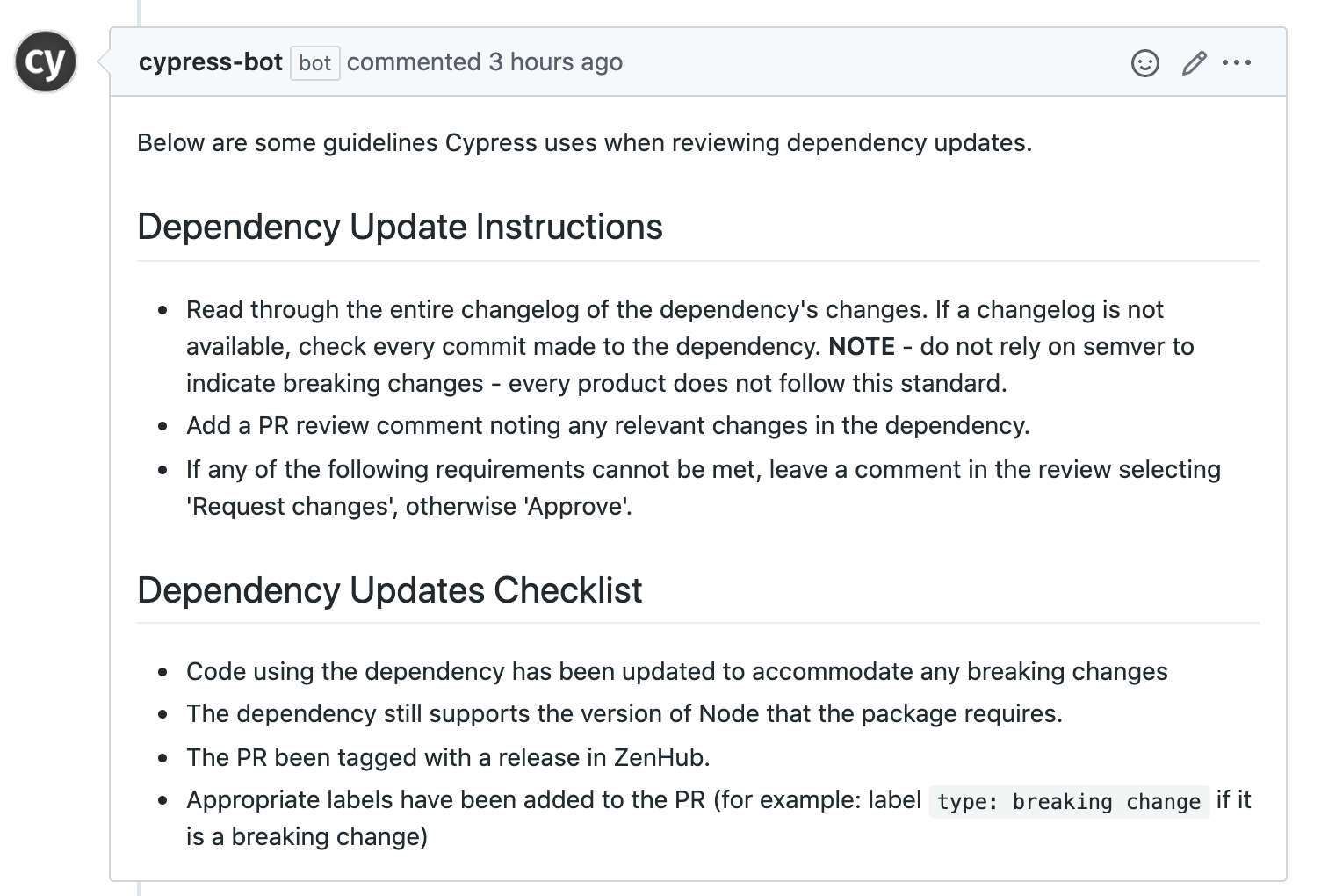
Not everyone follows semantic release 😞

semantic release
Commit subject convention
patch: a bug was fixed 🐞
minor: a new feature was added 🎉
major: breaking API change 👀
Semantic release tools inspect commits since last release to update version
major.minor.patch

SemVer = meaningful changelog
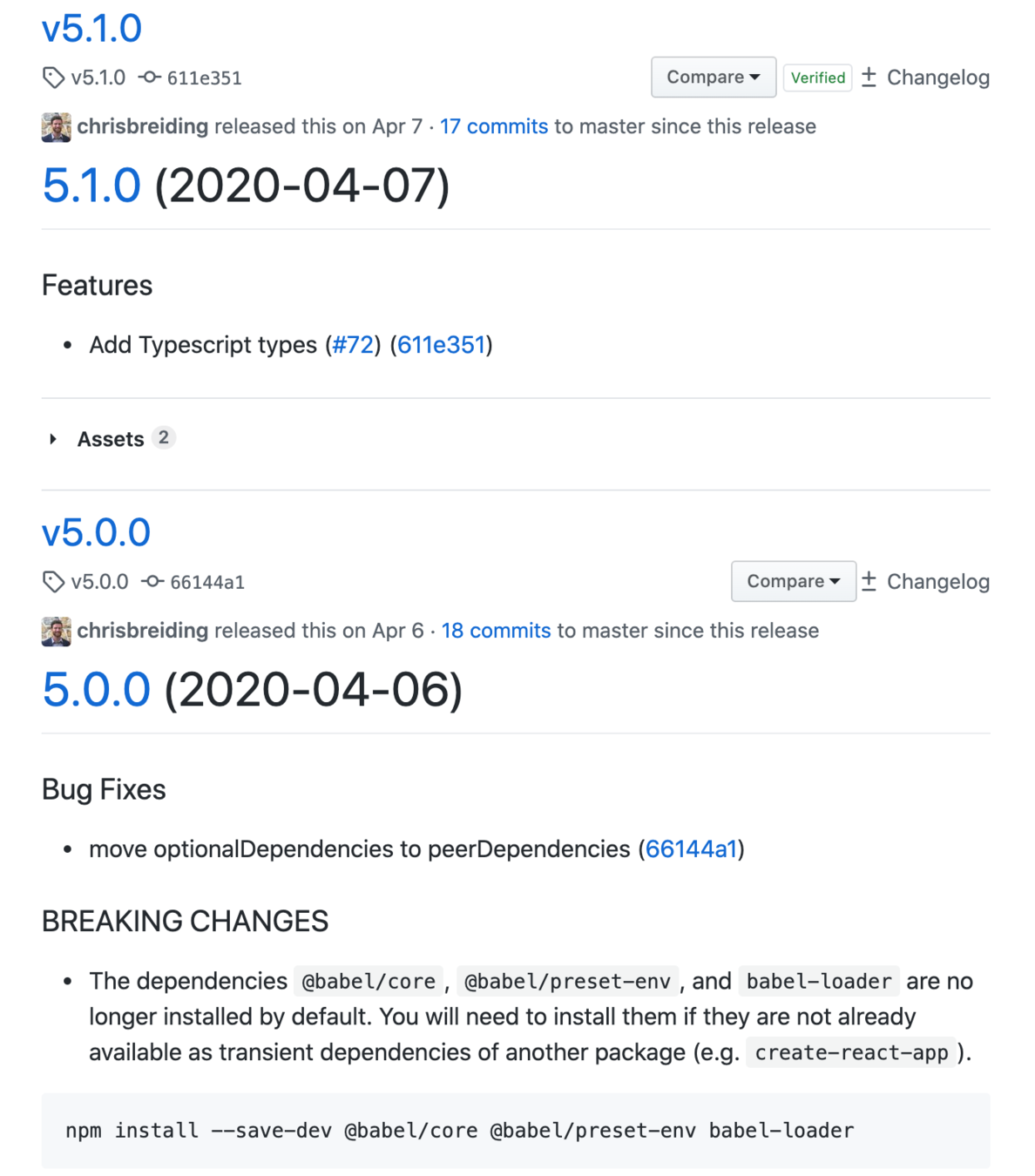
upgrade requires effort (maybe)
new feature!


Move Fast
-
production dependencies
-
development dependencies
-
"trusted" dependencies (usually our own)
prod
dev
trusted
How much effort does it take?


Goal:
- meaningful
- configurable
- automatic
No or little manual work


{
"extends": ["config:base"],
"automerge": true,
"major": {
"automerge": false
}
}renovate.json
Do you trust your tests enough to automerge dependency upgrades?



Tips: do not "jump" on the major version
🛑 X.Y.Z -> (X + 1).0.0
✅ X.Y.Z -> (X + 1).0.1
✅ X.Y.Z -> (X + 1).1.0


Do you trust your tests to find possible mistakes:
- Code syntax, types
- Logical
- Visual style
- A11y
- Compiling and bundling
- Security
- Performance
- Deployment


Do you trust your tests to find possible mistakes:
- Code syntax, types
Static code analysis tools (linters)


Do you trust your tests to find possible mistakes:
- Logical
Cover your code in meaningful tests


$ npm i -D cypressdescribe('Todo App', () => {
it('completes an item', () => {
cy.visit('http://localhost:8080')
// there are several existing todos
cy.get('.todo').should('have.length', 3)
})
})Cypress: free open-source end-to-end test runner for anything that runs in the browser


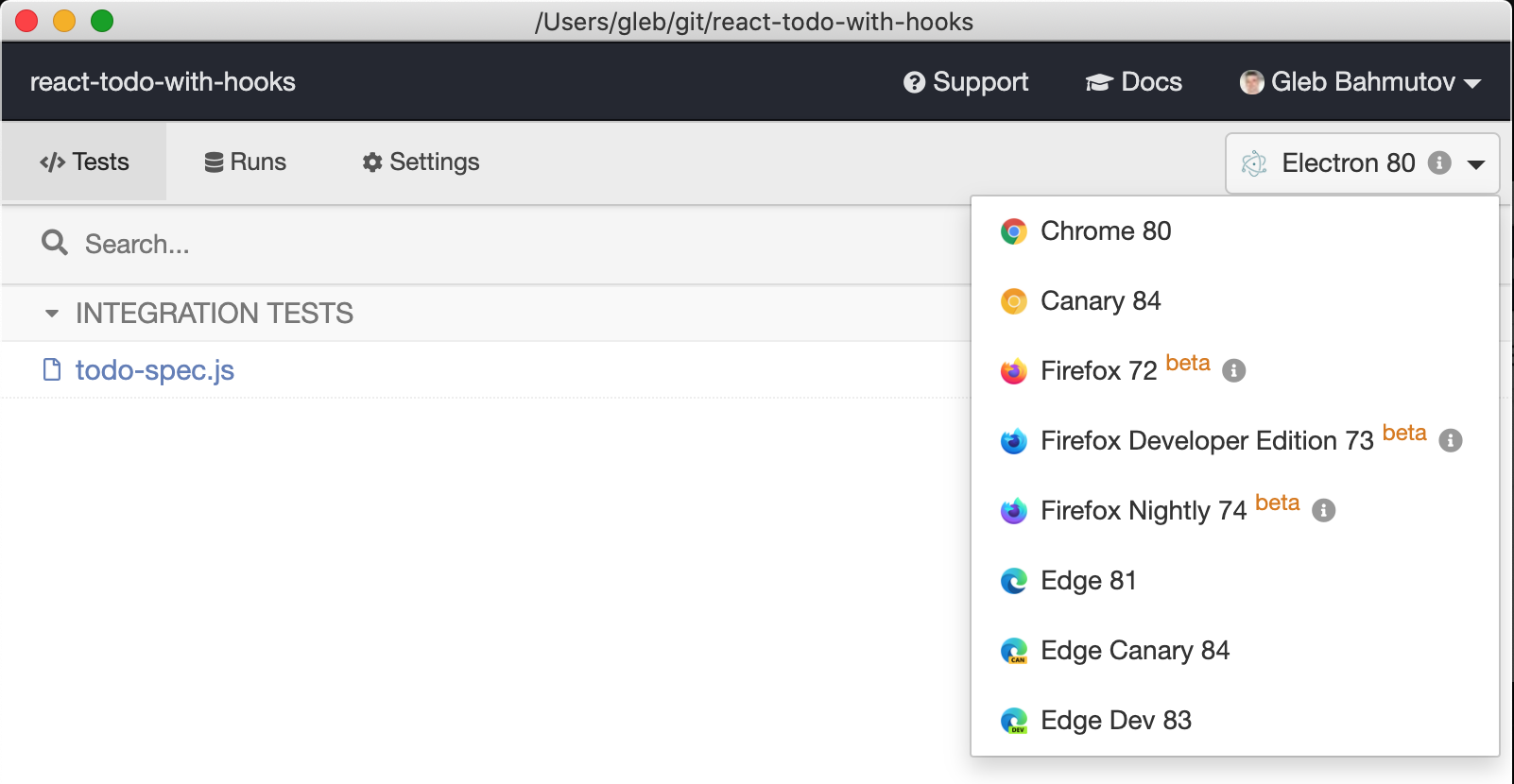

describe('Todo App', () => {
it('completes an item', () => {
// base url is stored in "cypress.json" file
cy.visit('/')
// there are several existing todos
cy.get('.todo').should('have.length', 3)
cy.log('**adding a todo**')
cy.get('.input').type('write tests{enter}')
cy.get('.todo').should('have.length', 4)
cy.log('**completing a todo**')
cy.contains('.todo', 'write tests').contains('button', 'Complete').click()
cy.contains('.todo', 'write tests')
.should('have.css', 'text-decoration', 'line-through solid rgb(74, 74, 74)')
cy.log('**removing a todo**')
// due to quarantine, we have to delete an item
// without completing it
cy.contains('.todo', 'Meet friend for lunch').contains('button', 'x').click()
cy.contains('.todo', 'Meet friend for lunch').should('not.exist')
})
})
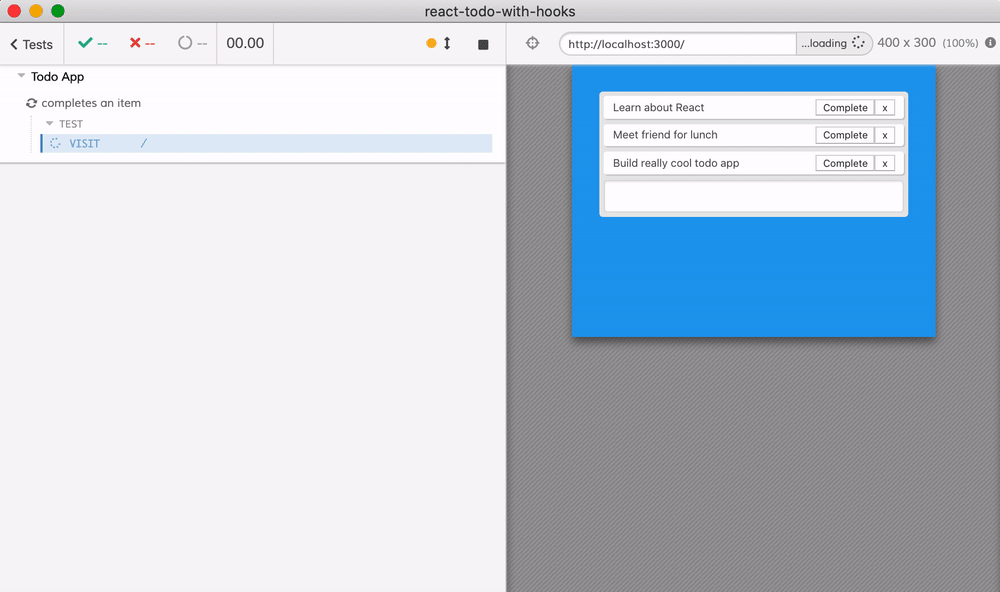


Do you trust your tests to find possible mistakes:
- Logical
Cover your code in meaningful tests


1. Carefully collect user stories and feature requirments
2. Write matching tests
Keep updating user stories and tests to keep them in sync
What should I test?


1. Carefully collect user stories and feature requirments
2. Write matching tests
Keep updating user stories and tests to keep them in sync
HARD


Are we testing all features?
Feature A
User can add todo items
Feature B
User can complete todo items
Feature C
User can delete todo items
❚❚❚❚❚
❚❚❚❚❚ ❚❚ ❚❚❚❚
❚❚❚
❚❚❚❚
❚❚❚ ❚❚❚❚❚❚❚
❚❚❚❚
❚❚
❚❚❚❚❚ ❚❚
❚❚❚❚❚❚
❚❚❚
❚❚❚❚❚
❚❚❚❚❚
❚❚❚❚
❚❚❚❚
❚❚❚❚❚❚ ❚❚❚ ❚❚
❚
❚❚
❚❚❚❚❚
❚❚❚❚❚ ❚❚ ❚❚❚❚
❚❚❚
❚❚❚❚
❚❚❚ ❚❚❚❚❚❚❚
❚❚❚❚
❚❚
❚❚❚❚❚ ❚❚
❚❚❚❚❚❚
❚❚❚
❚❚❚❚❚
❚❚❚❚❚
❚❚❚❚
❚❚❚❚
❚❚❚❚❚❚ ❚❚❚ ❚❚
❚
❚❚
❚❚❚❚❚
❚❚❚❚❚ ❚❚ ❚❚❚❚
❚❚❚
❚❚❚❚
❚❚❚ ❚❚❚❚❚❚❚
❚❚❚❚
❚❚
❚❚❚❚❚ ❚❚
❚❚❚❚❚❚
❚❚❚
❚❚❚❚❚
❚❚❚❚❚
❚❚❚❚
❚❚❚❚
❚❚❚❚❚❚ ❚❚❚ ❚❚
❚
❚❚
source code
Keeping track via code coverage


Are we testing all features?
Feature A
User can add todo items
Feature B
User can complete todo items
Feature C
User can delete todo items
❚❚❚❚❚
❚❚❚❚❚ ❚❚ ❚❚❚❚
❚❚❚
❚❚❚❚
❚❚❚ ❚❚❚❚❚❚❚
❚❚❚❚
❚❚
❚❚❚❚❚ ❚❚
❚❚❚❚❚❚
❚❚❚
❚❚❚❚❚
❚❚❚❚❚
❚❚❚❚
❚❚❚❚
❚❚❚❚❚❚ ❚❚❚ ❚❚
❚
❚❚
❚❚❚❚❚
❚❚❚❚❚ ❚❚ ❚❚❚❚
❚❚❚
❚❚❚❚
❚❚❚ ❚❚❚❚❚❚❚
❚❚❚❚
❚❚
❚❚❚❚❚ ❚❚
❚❚❚❚❚❚
❚❚❚
❚❚❚❚❚
❚❚❚❚❚
❚❚❚❚
❚❚❚❚
❚❚❚❚❚❚ ❚❚❚ ❚❚
❚
❚❚
source code
it('adds todos', () => { ... })it('completes todos', () => {
... })Keeping track via code coverage


Are we testing all features?
Feature A
User can add todo items
Feature B
User can complete todo items
Feature C
User can delete todo items
❚❚❚❚❚
❚❚❚❚❚ ❚❚ ❚❚❚❚
❚❚❚
❚❚❚❚
❚❚❚ ❚❚❚❚❚❚❚
❚❚❚❚
❚❚
❚❚❚❚❚ ❚❚
❚❚❚❚❚❚
❚❚❚
❚❚❚❚❚
❚❚❚❚❚
❚❚❚❚
❚❚❚❚
❚❚❚❚❚❚ ❚❚❚ ❚❚
❚
❚❚
source code
it('adds todos', () => { ... })it('completes todos', () => {
... })green: lines executed during the tests
red: lines NOT executed during the tests
Keeping track via code coverage


Are we testing all features?
Feature A
User can add todo items
Feature B
User can complete todo items
Feature C
User can delete todo items
❚❚❚❚❚
❚❚❚❚❚ ❚❚ ❚❚❚❚
❚❚❚
❚❚❚❚
❚❚❚ ❚❚❚❚❚❚❚
❚❚❚❚
❚❚
❚❚❚❚❚ ❚❚
❚❚❚❚❚❚
❚❚❚
❚❚❚❚❚
❚❚❚❚❚
❚❚❚❚
❚❚❚❚
❚❚❚❚❚❚ ❚❚❚ ❚❚
❚
❚❚
source code
it('adds todos', () => { ... })it('completes todos', () => {
... })it('deletes todos', () => {
... })Keeping track via code coverage


Are we testing all features?
Feature A
User can add todo items
Feature B
User can complete todo items
Feature C
User can delete todo items
❚❚❚❚❚
❚❚❚❚❚ ❚❚ ❚❚❚❚
❚❚❚
❚❚❚❚
❚❚❚ ❚❚❚❚❚❚❚
❚❚❚❚
❚❚
❚❚❚❚❚ ❚❚
❚❚❚❚❚❚
❚❚❚
❚❚❚❚❚
❚❚❚❚❚
❚❚❚❚
❚❚❚❚
❚❚❚❚❚❚ ❚❚❚ ❚❚
❚
❚❚
source code
it('adds todos', () => { ... })it('completes todos', () => {
... })it('deletes todos', () => {
... })Code coverage from tests indirectly
measures implemented features tested
Keeping track via code coverage


⚠️ 100% Code Coverage ≠ 0🐞
Feature A
User can add todo items
Feature B
User can complete todo items
Feature C
User can delete todo items
❚❚❚❚❚
❚❚❚❚❚ ❚❚ ❚❚❚❚
❚❚❚
❚❚❚❚
❚❚❚ ❚❚❚❚❚❚❚
❚❚❚❚
❚❚
❚❚❚❚❚ ❚❚
❚❚❚❚❚❚
❚❚❚
❚❚❚❚❚
❚❚❚❚❚
❚❚❚❚
❚❚❚❚
❚❚❚❚❚❚ ❚❚❚ ❚❚
❚
❚❚
source code
it('adds todos', () => { ... })it('completes todos', () => {
... })it('deletes todos', () => {
... })Unrealistic tests; subset of inputs
code does not implement the feature correctly


Code Coverage with @cypress/code-coverage
-
Instrument code (YOU)
-
Using Istanbul / nyc library
-
-
Cypress does the rest


it('adds todos', () => {
cy.visit('/')
cy.get('.new-todo')
.type('write code{enter}')
.type('write tests{enter}')
.type('deploy{enter}')
cy.get('.todo').should('have.length', 3)
})E2E tests are extremely effective at covering a lot of app code
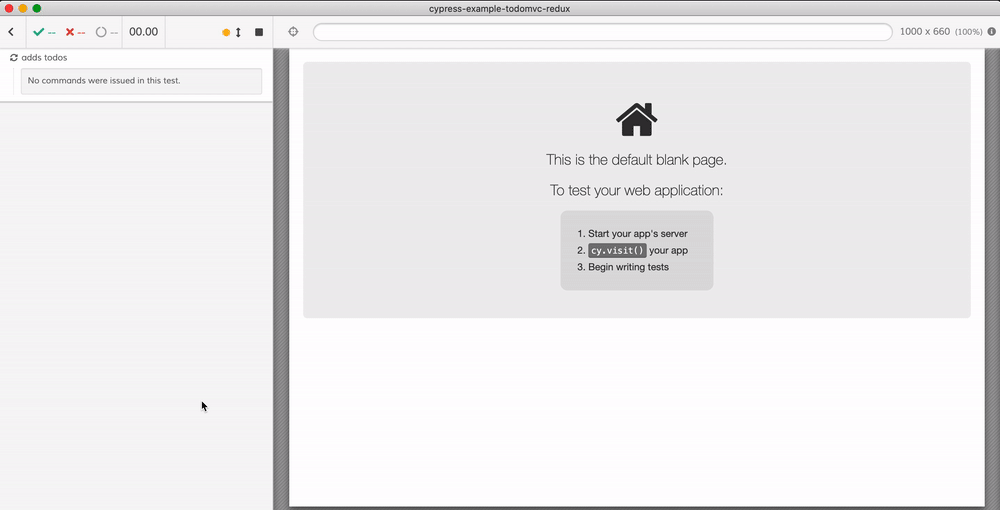


it('adds todos', () => {
cy.visit('/')
cy.get('.new-todo')
.type('write code{enter}')
.type('write tests{enter}')
.type('deploy{enter}')
cy.get('.todo').should('have.length', 3)
})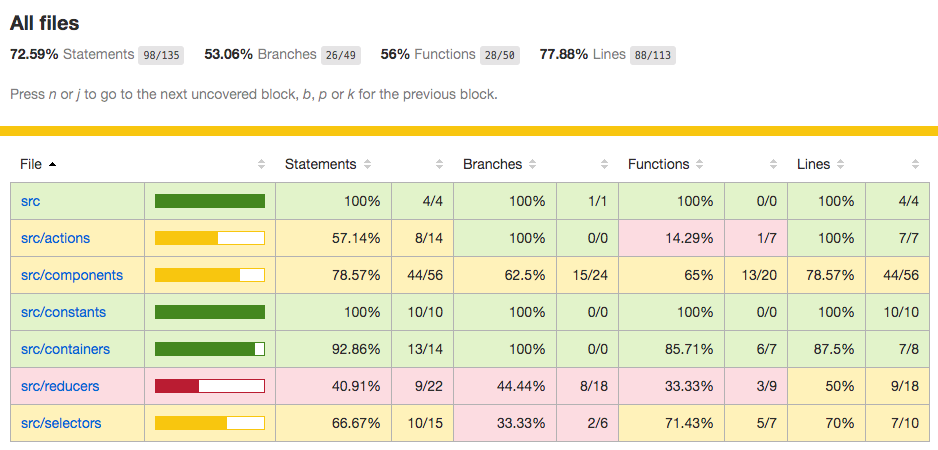
E2E tests are extremely effective at covering a lot of app code



Nice job, @cypress/code-coverage plugin
Cypress E2E, component and unit test produce combined code coverage report


Do you trust your tests to find possible mistakes:
- Visual style
Use image diffing tests
it('looks the same', () => {
// visit the page
// interact like a user
// now we can do visual diffing
cy.get('.react-calendar-heatmap').happoScreenshot({
component: 'CalendarHeatmap',
})
})


Visual review against baseline image


Visual review against baseline image



Do you trust your tests to find possible mistakes:
- A11y
Use accessability testing plugin
it('catches missing aria-* label', () => {
// https://github.com/avanslaars/cypress-axe
cy.injectAxe()
cy.visit('/')
cy.checkA11y('input', {
runOnly: {
type: 'tag',
values: ['wcag2a'],
},
})
})




Do you trust your tests to find possible mistakes:
- Code syntax, types
- Logical
- Visual style
- A11y
- Compiling and bundling
- Security
- Performance
- Deployment


Do you trust your tests to find possible mistakes:
- Code syntax, types
- Logical
- Visual style
- A11y
- Compiling and bundling
- Security
- Performance
- Deployment
End-to-end tests


I feel safe automatically updating dependencies if all commit checks pass
- high code coverage
- visual snapshots


Good tests ➡ confidence ➡ ability to move fast ➡ staying fully patched & safe


Q&A

